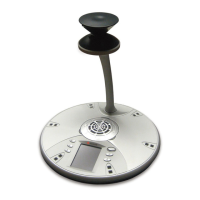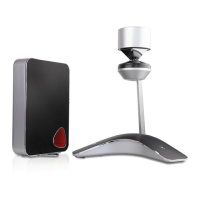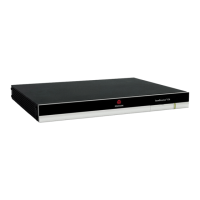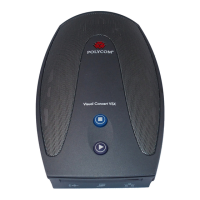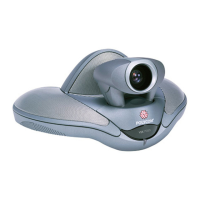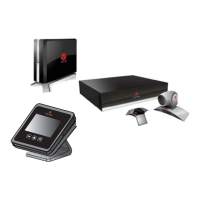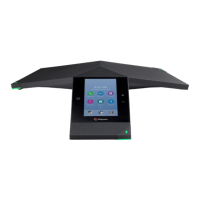Polycom CX5500 Unified Conference Station Administrator’s Guide 1.1.0
Polycom, Inc. 125
The macros provide a generic and easy to manage way to define the prompt to be displayed to the user,
the maximum number of characters that the user can input, and the action that the phone performs once
all user input has been collected. The macros are case sensitive.
If a macro attempts to use a prompt that is disabled, the macro execution fails. A prompt is not required
for every macro.
Expanded Macros
Expanded macros are prefixed with the ^ character and are inserted directly into the local directory
contact field. For more information, see Use the Local Contact Directory.
Special Characters
The following special characters are used to implement the enhanced feature key functionality. Macro
names and macro labels cannot contain these characters. If they do, you may experience unpredictable
behavior.
● ! The characters following it are a macro name.
● ' or ASCII (0x27) This character delimits the commands within the macro.
● $ This character delimits the parts of the macro string. This character must exist in pairs, where the
delimits the characters to be expanded.
● ^ This character indicates that the following characters represent the expanded macro (as in the
action string).
Example Macro
The action string
$Changup$*444*$P1N4$$Tinvite$$Cwaitconnect$$P2N3$$Cpause2$$Tdtmf$$Changup$
is executed in order as follows:
a The user is prompted for 4 digits. For example, 1234.
b The user is prompted for 3 digits. For example, 567.
c The user’s active call is disconnected.
d The string *444*1234 is sent using the INVITE method.
e Once connected, there is a 2 second pause, and then the string 567 is sent using DTMF dialing
on the active call.
f The active call is disconnected.
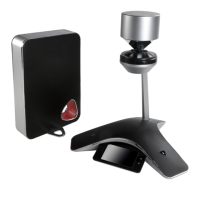
